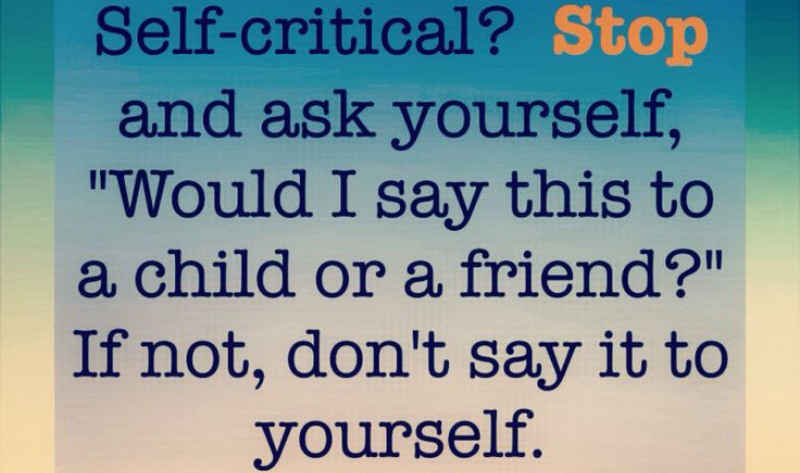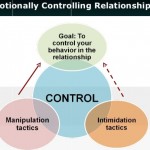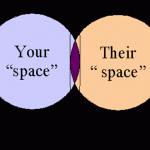Passive behavior involves a consistent urge to maintain a positive vibe in the relationship by being eager to please. In the process of seeking approval and working towards maintaining the approval of a significant other, a passive person continues to give up on his/her preferences and needs. It is when this pattern of sacrifice extends to all realms of life that an unhealthy imbalance infiltrates the relationship dynamic. While it is important to value and respect others, it is essential to give your own self and your needs the respect they deserve.
Image source: Shutterstock
Consistent passivity results in sacrificing on your own goals and ambitions, putting off your own needs and wants until resentment starts to breed. It starts as an innocuous dependence upon the other person to achieve an ‘end’ that they deem is right for you. In this process, a passive person ends up surrendering all autonomy and freedom, in little tokens, and then, gradually in dollops until they begin to feel helpless and trapped. In giving up the driver’s seat to someone else whilst relaxing in the passenger seat for their own life, they are not only putting up their ‘lack of initiative, direction and drive’ in life up on exhibit but also making someone in charge of directing the course of their life. Usually an offshoot of insecurity, this one more often than not results in feelings of isolation and aloofness.
Suggested read: Setting boundaries in relationships – here’s how to do it
So, how does one set about identifying the patterns inherent in a passive relationship? Here are some signs that you should look out for:
1. Hesitant approval-seeking behavior: The passive individual is fearful of upsetting the other person, and more so of rejection/disapproval. This fear prevents them from being assertive and they resort to permission-seeking to soften any ‘negative’ impact they may perceive their comments/opinion to have.
Image source: Google, copyright-free image under Creative Commons License
2. Broken speech pattern: Their lack of certainty in dealing with expression of opinions/perspectives or even feelings results in a broken speech pattern. Broken rhythm, hesitation, and ‘err,’ ‘umm’ type of filler words are a common element of their speech pattern.
Suggested read: How to set boundaries in a deceitful relationship
3. Self-deprecation: While self-deprecation is used by most as a form of humor, passive people put themselves down at the drop of a hat and quite seriously at that. Their negative assessment of self and low self-esteem and confidence are an outcome of the severity with which they deal with their own self.
Image source: Google, copyright-free image under Creative Commons License
4. Overwhelming self-criticism: Whilst none of us are infallible, passive people tend to be overly critical of their mistakes and faults. While it is a given that they make few or zilch demands of others, they place quite overbearing and unrealistic standards upon themselves. And when they fail to match up, they resort to extremely harsh self-criticism.
Suggested read: Telltale signs of an unhealthy relationship are…
5. Extra emphasis on the preferences of others: Their eagerness to please leads them to place a premium on other people’s preferences and needs whilst they levy huge discounts/make free of their own needs. This pattern of sweeping aside one’s own needs and desires to continually accommodate the other person’s leads to an unhealthy imbalance in the relationship dynamic.
Image source: Google, copyright-free image under Creative Commons License
6. Passive/avoidant body language: Avoiding eye contact while speaking, looking toward a lifeless object during communication, soft-spoken, with voice lowering and tapering off toward the end, clear signals of discomfort in facial expressions or posture are all signs of passivity.
Suggested read: A controlling relationship is not good for a healthy and happy you
Setting boundaries in a passive relationship is an uphill task. The difficulty lies more in identification than anything else. Since there is a self-fueled action of maintaining ill-defined boundaries or worse, erasing them, it is very difficult to identify the damages being inflicted until the very later stages of feeling resentment and helplessness. After crossing the saturation point, the resentment may pour out in aggressive ways. To prevent a passive relationship from reaching that stage and becoming a hostile and violent one, one should ensure that the following are taken care of:
1. Identify the symptoms
Image source: Shutterstock
Recognition of the symptoms is the key to self-help. Passive people are themselves aware of the reality, at a subconscious level. The admission is the most difficult to make. This step can be achieved by small talk, placing a premium on their needs and desires, making them see the ‘positive’ inscribed within the process of realizing their own dreams and exhorting them to open up.
2. Accept the reality
Once the acknowledgement and admission have come through, the passive individual needs to accept that they need to break free of the unhealthy patterns that taint their life. Any short-term mechanism resorted to, to help them admit to their reality, is not going to be effective. They may relapse into a passive cycle, once the external factors inducing that change are removed. For them to internalize the change, they need to go deeper.
3. Remember that any relationship is a two-way street
They need to realize the components of a healthy relationship. They need to accept that any relationship is made of two people, both of whom are equally responsible for keeping it healthy and happy.
Suggested read: That silence may be killing your relationship. Communication is key
4. Learn to communicate
Image source: Shutterstock
Once the ‘ideal’ sinks in and they have come to grips with their folly of dealing with their relationship as a one-sided process, they shall realize the importance of communication. The former patterns of expression shall be hard to break and this stage may encounter intermittent cycles of agreement, resistance, and hostility.
5. Seek help
Image source: Shutterstock
If it is difficult for the passive individual to break free of their deterrent communication patterns, it is advisable to seek professional help. A counselor/therapist can help overcome the specific hurdles and make the journey towards ‘healthy and happy’ smooth and hassle-free.
6. Give yourself your due
Everyone is worthy of being in a loving relationship wherein both partners participate as emotional equals. Remember that taking care of yourself is your foremost duty and there is no guilt/shame attached to it whatsoever. Deem yourself worthy of happiness and you shall soon be welcoming it.
For those with a passive partner, it is crucial to remember that you can play a key role in the identification and acceptance stages. In talking straight and refusing to bounce the boomerang back, you can promote an effective system of internal and interpersonal dialogue that may help them to open up. As such, they will learn to be gentler and less severe on themselves, shall be willing to voice their needs, thereby, inching closer to being an assertive person.
Good Luck! J
Featured image source: Shutterstock



















